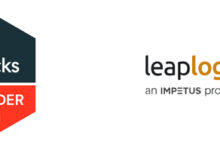
How Flutter Helps Fintech Apps Go to Market Faster
Clean code is only one part of the job. Fintech apps require much more to exist in the real world, such as speed, safety, and usability. There are tight deadlines, changing requirements, and users expect speed. Whether building a personal finance tool, a payment app or something else, speed often determines who breaks through and who gets lost.
But moving fast doesn’t mean cutting corners. Fintech doesn’t leave much room for error. From the start, you’ve got to think about security, meet compliance standards, build for scale, and still keep things easy to use. The challenge is building quickly without building twice. That’s where Flutter, Google’s cross-platform app framework, is starting to change the game for many teams.
Table of Contents
Why Speed Matters in Fintech App Development
Timing can make or break a fintech launch. You’re not just fighting other startups. You’re also competing with traditional institutions that now have tech budgets and digital teams of their own. Wait too long to launch, and someone else will fill the gap. Every delay gives your competition more room to grow into the space you were aiming for.
Teaming up with a fintech app development company that truly gets the pressure around compliance, speed, and user needs can push your project in the right direction from day one.
The Bottlenecks Most Fintech Teams Face
At first, building a fintech app feels simple enough. Then come the real challenges where features like onboarding or payments start to uncover the layers beneath. Security checks, approval flows, and compliance requirements start stacking up fast. And that’s where most teams hit friction:
- Maintaining iOS and Android codebases separately
- Making an interface that doesn’t obstruct the user’s experience
- Running the same test cycles again and again across devices
- Tweaking features every time a policy or rule gets updated
How Flutter Helps Fintech Projects Move Faster
Rather than writing two separate apps for Android and iOS, developers can work from one shared codebase. That switch alone can shave off weeks of effort. But speed isn’t just about writing less code. It’s about what the framework lets you do along the way. What actually helps speed things up?
- Developers can use Hot Reload to tweak code instantly without restarting
- UI components adjust to fit different screens, so the design doesn’t break between devices
- The built-in testing setup helps spot bugs early, before they grow into headaches
- The plugin library helps adding payments and security features without taking weeks
When you’re building fast and every week counts, Flutter can give your team room to breathe. You’re able to move fast without skipping the steps that keep your app stable and secure.
Why Flutter Appeals to Fintech Startups
Fintech startups walk a fine line. The backend has to handle transactions without fail, while the frontend needs to earn trust the moment someone opens the app. Flutter gives startups the flexibility to do both without inflating the timeline or budget.
It’s especially useful in early-stage builds:
- You can get an MVP out the door that feels like a finished product
- Cross-platform updates are easier to manage during iteration
- UI customizations help build user trust right away
- It’s easier to test new features without committing to a full rebuild
Getting the Right Tech Team Behind Your Flutter Build
Having the right framework is one thing. Having the right team to use it well is another. A capable Flutter app development company can save you weeks of rework and help you get the best out of the framework.
They’ve seen the common traps. They know how to structure a cross-platform fintech app for both performance and security. And they won’t waste your time duplicating work that already exists in the Flutter ecosystem.
Building for Finance Means Thinking Beyond Code
In fintech, achieving technical capability without having domain knowledge is of little value; hence many teams prefer to work with specialists rather than generalists.
Generalists don’t understand the intricacies of audits, financial data management, and workflows that ultimately protect the user and the business. They’ve worked with KYC platforms, built-in payment rails, fraud detection modules, and so forth.
When your tech partner speaks the language of finance and not just code, your development moves faster and launches cleaner.
What Sets Successful Fintech Projects Apart
Just because a fintech app makes it to the store doesn’t mean people will use it. The ones that gain real traction usually got a few key things right early on. Sure, Flutter can help you move faster but in the end, it’s the planning, execution, and delivery that shape whether users stay or delete it after one try.
From what we’ve seen, strong fintech launches usually check a few key boxes:
- A focused feature set that solves one real user problem first
- An interface that’s quick to load, easy to trust, and simple to use
- Clean, reliable connections with services like UPI, bank APIs, or KYC platforms
- Testing across multiple devices and real-world conditions
- A team or company that gets your goals and builds with them in mind
Final Thoughts
Flutter cannot solve everything, but it removes a lot of typical roadblocks. As fintech teams are working against the clock, having a single codebase, fast UI development, and built-in testing really matters. It removes pressure from the build process and allows your squad to focus on the things that actually matter to users.
Nonetheless, tools are just tools and the real advantage comes in finding people who understand what you are building and why. Partnering with a company that understands both the product and the platform sets you up for a cleaner, faster launch with a better chance of lasting success.








